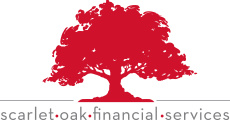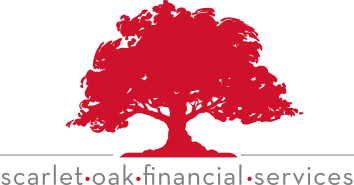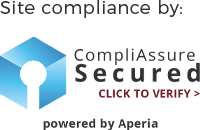Introduction: Understanding Your Borrowing Options
When you need to borrow money, understanding the different types of loans available is essential to making a smart financial decision. Loans are not one-size-fits-all, and each type of borrowing option—whether a mortgage, auto loan, personal loan, or credit card—comes with its own set of terms, interest rates, and repayment structures. While securing the lowest possible interest rate is important, other factors such as loan terms, repayment flexibility, and eligibility requirements should also be considered.
With so many loan options available, it’s crucial to understand how they work and which one best suits your financial needs. Whether you are looking to finance a home, fund an education, cover an emergency expense, or consolidate debt, knowing the differences between secured and unsecured loans, fixed and adjustable interest rates, and government-backed versus private lending options will help you choose the best borrowing strategy.
What is it?
When you are planning to borrow money, you should take some time to evaluate your alternatives and pick the kind of loan arrangement that is best suited for you and your particular needs. The lowest interest rate should not be the only factor to consider. Further, you should not always rely on your friendly banker to steer you in the right direction. Your banker may be more interested in maximizing profits than in providing you with the plan that is best for you. Knowledge is your best ally when shopping.
Different types of loans are designed to accommodate different needs. A mortgage loan is designed for a specific purpose. If you are buying a house, you should probably shop for a mortgage loan. However, it is not always a clear-cut decision. For instance, if you are planning to buy a car, it may be less expensive to fund the purchase with home equity financing than with an auto loan. Accordingly, it is beneficial to know what types of loans are available to you.
What should you know before comparing loans?
Associated with every loan are four variables:
- Loan amount
- Interest rate
- Term
- Payment
The loan amount is the amount of cash you are borrowing. The interest rate is the price you pay to borrow that amount. The term is the number of months or years you have to repay the loan. The payment is how much you must remit monthly or annually. If you know any three of these variables, and you have a financial calculator, you can calculate the fourth.
Of the four variables, the loan amount and the monthly payment are limited by what you can afford. The task is to find a loan with an interest rate and term that allow you to borrow what you need at a payment you can afford.
What types of loans are out there?
Secured and unsecured loans
A loan is either secured or unsecured. Secured loans have collateral. If the borrower does not repay the loan as agreed, the lender can take the collateral and sell it to satisfy the debt. Unsecured loans do not have collateral. The borrower merely promises to repay the loan as agreed. Secured loans are less risky for lenders. Accordingly, secured loans usually come with a lower interest rate.
Auto loans
Auto loans are designed to fund the purchase of an automobile. Generally, they are like other secured loans and require a down payment (or trade-in). The car becomes collateral for the loan and can be repossessed if you do not pay. Lenders are very competitive and rates vary significantly. Although auto loans are typically the logical choice for financing an automobile purchase, you may want to consider funding the purchase with a home equity loan or line of credit.
Mortgages
Mortgages are loans designed to fund the purchase of a home. The amount you are borrowing frequently dictates what type of loan you need. Such is the case with most mortgages. Most home buyers need a 15- to 30-year repayment period when buying a home. Additionally, most buyers prefer the lower interest rates available when applying for a loan secured by real estate.
Home improvement loans
When you wish to make improvements or repairs to your house, you may want to consider a home improvement loan. Generally, terms are favorable and interest rates are reasonable. Further, there may be favorable income tax treatment. However, you are not required to fund such projects with a home improvement loan. Such projects, either wisely or not, are frequently funded with credit cards, personal loans, and personal lines of credit. Your choice may depend upon the amount you are borrowing and how fast you need the funds.
Home equity loans and lines of credit
Home equity loans and lines of credit are an effective way to get cash out of your home. You can use the equity in your home as collateral and receive cash. Although you put your home at risk, you benefit from reasonable interest rates, attractive terms, and favorable income tax treatment. Lines of credit are frequently used as a source of emergency funds, as well as to fund college education expenses. They can also be used to pay off other personal indebtedness–thus effectively converting nondeductible interest into deductible interest.
Credit cards
Credit card borrowing is the most convenient type of borrowing. Rates tend to be high and subject to change, but you can use credit cards for nearly any type of purchase. If you need cash for emergencies or can afford to pay off the outstanding balance quickly, then credit cards are an excellent choice.
Education loans
If you are trying to fund an education, education loans are usually your best bet. Most education loan programs are managed by government agencies. Repayment terms are tailored for student borrowers. Interest rates are better than average, and favorable income tax treatment may be available. However, most student loans have eligibility requirements. If you don’t qualify, there are other ways of financing an education with a second mortgage or equity line.
Personal loans or lines of credit
Personal loans and lines of credit are usually unsecured loans. Typically, interest rates are lower than rates for credit cards. Personal loans are commonly used for small to moderate purchases and loan consolidation. When larger purchases are involved, you can get better interest rates by posting collateral. Credit lines are often used for emergencies or in lieu of credit cards.
Loans with cosigners, comakers, or guarantors
Most of the loans listed previously can be obtained with or without a cosigner, comaker, or guarantor. In many cases, however, you can overcome credit problems, or obtain better interest rates, if you have a cosigner, comaker, or guarantor who agrees to share responsibility for the loan or take over payments if you default on the loan.
What else should you be aware of when shopping for a loan?
Interest rates vary
Interest rates vary from one type of loan to another and from lender to lender. Generally, you want to pay the least amount of interest possible. However, you may have to pay for a lower interest rate. You may find that one mortgage has a higher interest rate, but does not require you to pay points or closing costs. Another mortgage may have a low rate, but a 15-year repayment term, rather than a 30-year repayment term. Be careful not to sacrifice important features merely to lock in a better interest rate.
Interest rate may be fixed or adjustable
Generally, when you apply for a loan, the interest rate will be either fixed or adjustable. A fixed interest rate stays the same throughout the life of the loan. It is predictable, but if interest rates drop in the market, you will be locked into the higher fixed rate unless you refinance to obtain a lower rate. Adjustable rate loans are usually tied to an index. They follow the market. They are less predictable, but if interest rates in the market drop, you will benefit from a decrease in your interest rate.
Some loans require a down payment
Some types of loans require a down payment. Typically, secured loans, such as mortgages and auto loans, require a down payment (or trade-in). If you have no money to put down on the purchase and cannot wait to save up the money, you may need to seek other sources of financing or find a way of funding the down payment. Depending on the circumstances, this may cost you more in the long run.
Repayment terms vary
If you can’t afford the monthly payment, you can’t afford the loan. Most frequently, your monthly payment will be constant, or nearly constant, with only minor changes if you have an adjustable rate loan.
However, some loans are designed with creative repayment terms
Under some loan arrangements, you pay less per month in the beginning and more per month later in the life of the loan. Under other plans, you may have low monthly payments with a large lump-sum payment, or balloon payment, at the end of the loan term. Some plans allow for deferments during times of unemployment or disability. You need to look for a repayment plan that suits your needs.
A loan may or may not have revolving features
Some loans have a revolving feature. Under the terms of most traditional loans, you borrow a fixed amount of money and pay it off in fixed monthly installments over a fixed period of time. In contrast, when you borrow on a revolving basis, an account is established and a borrowing limit is set. You can take an advance at any time, in any amount, as you need it, as long as your total borrowing does not exceed the established borrowing limit. You make a minimum monthly payment that varies depending upon the amount of your outstanding principal balance. As you pay down the balance, you can borrow up to the limit again. Major credit cards, home equity lines of credit, and personal lines of credit are examples of revolving loans.
Generally, revolving loans are convenient and flexible. If you are a disciplined borrower, a revolving loan may be the perfect choice for you. However, a revolving loan can cause problems for the undisciplined borrower. If you are tempted into making no more than the minimum monthly payment on your revolving account, it can take you an unreasonable amount of time to pay off the balance. The longer the balance is outstanding, the more interest you pay.
A loan may or may not be government backed
Some loan programs are insured or guaranteed by governmental or semigovernmental agencies. Government guaranteed federal student loans, Veterans Administration (VA) mortgages, and Federal Housing Authority (FHA) home improvement loans and mortgages are examples. Generally, these types of loans have favorable terms and low interest rates. They often have attractive forbearance policies. If you qualify, these are typically your best bets for borrowing.
Various other features may be important to you
In addition to the major features discussed, there are many less obvious features that may distinguish one loan from another. For example, when shopping for a mortgage loan, you will encounter issues regarding prepayment penalties, closing costs, buy-downs, private mortgage insurance (PMI), and more. Any or all of these issues may be important to you in your particular situation. Read the fine print, ask the loan officer questions, and give yourself time to make your decision.
Conclusion: Making Informed Borrowing Decisions
Choosing the right loan requires careful consideration of your financial situation, borrowing needs, and repayment ability. Secured loans offer lower interest rates but require collateral, while unsecured loans provide more flexibility but often come with higher rates. Government-backed loans may provide attractive terms, but eligibility requirements must be met. Additionally, factors such as revolving credit, prepayment penalties, and repayment schedules should be weighed when selecting a loan.
By researching loan options, comparing lenders, and understanding the terms and conditions of each loan type, borrowers can make informed financial decisions that align with their long-term goals. Borrowing responsibly ensures financial stability and minimizes the risks associated with debt, allowing you to take advantage of loan opportunities while maintaining control over your finances.
Scarlet Oak Financial Services can be reached at 800.871.1219 or contact us here. Click here to sign up for our weekly newsletter with the latest economic news.
Source:
Broadridge Investor Communication Solutions, Inc. prepared this material for use by Scarlet Oak Financial Services.
Broadridge Investor Communication Solutions, Inc. does not provide investment, tax, legal, or retirement advice or recommendations. The information presented here is not specific to any individual’s personal circumstances. To the extent that this material concerns tax matters, it is not intended or written to be used, and cannot be used, by a taxpayer for the purpose of avoiding penalties that may be imposed by law. Each taxpayer should seek independent advice from a tax professional based on individual circumstances. Scarlet Oak Financial Services provide these materials for general information and educational purposes based upon publicly available information from sources believed to be reliable — we cannot assure the accuracy or completeness of these materials. The information in these materials may change at any time and without notice.



